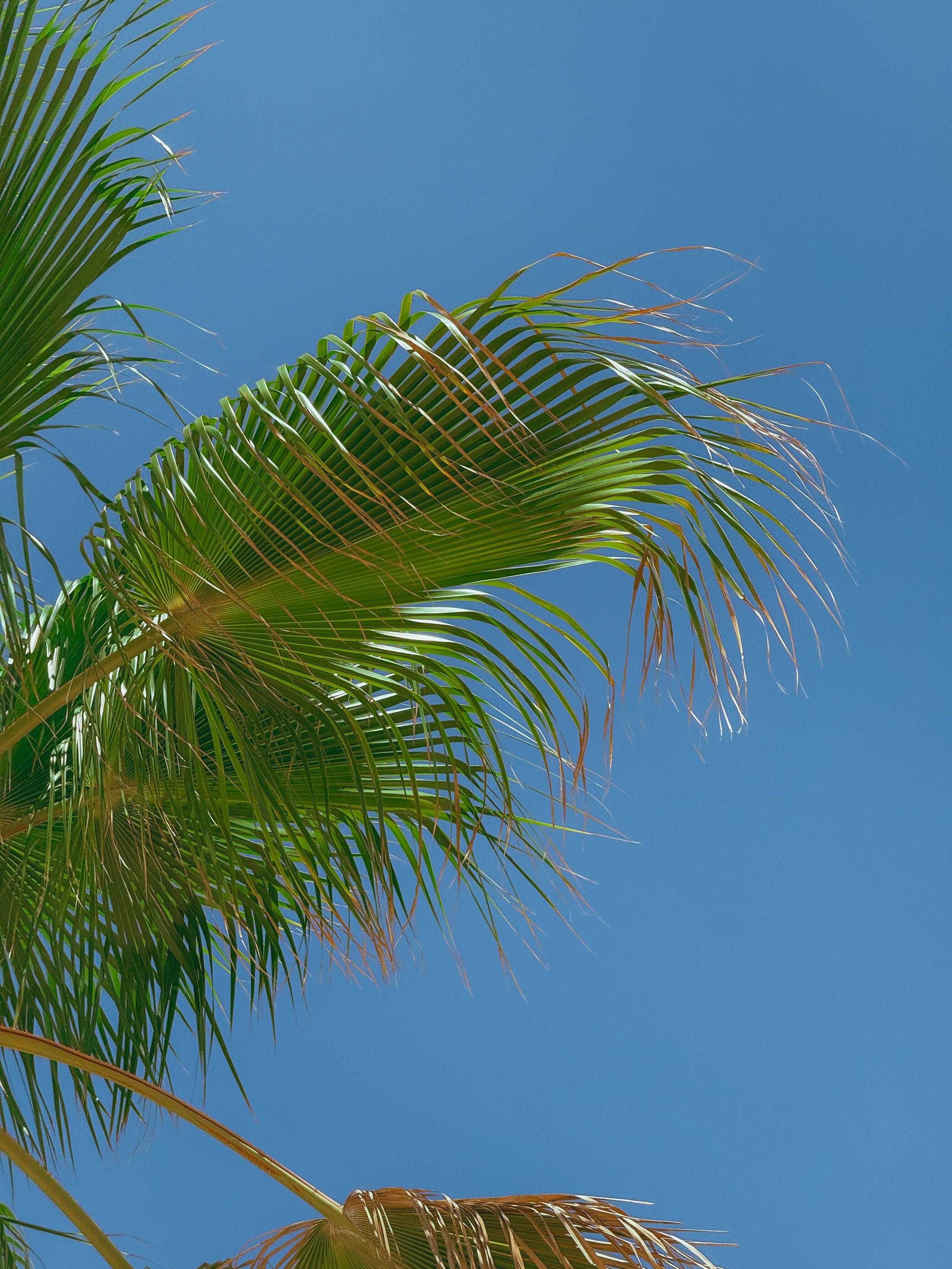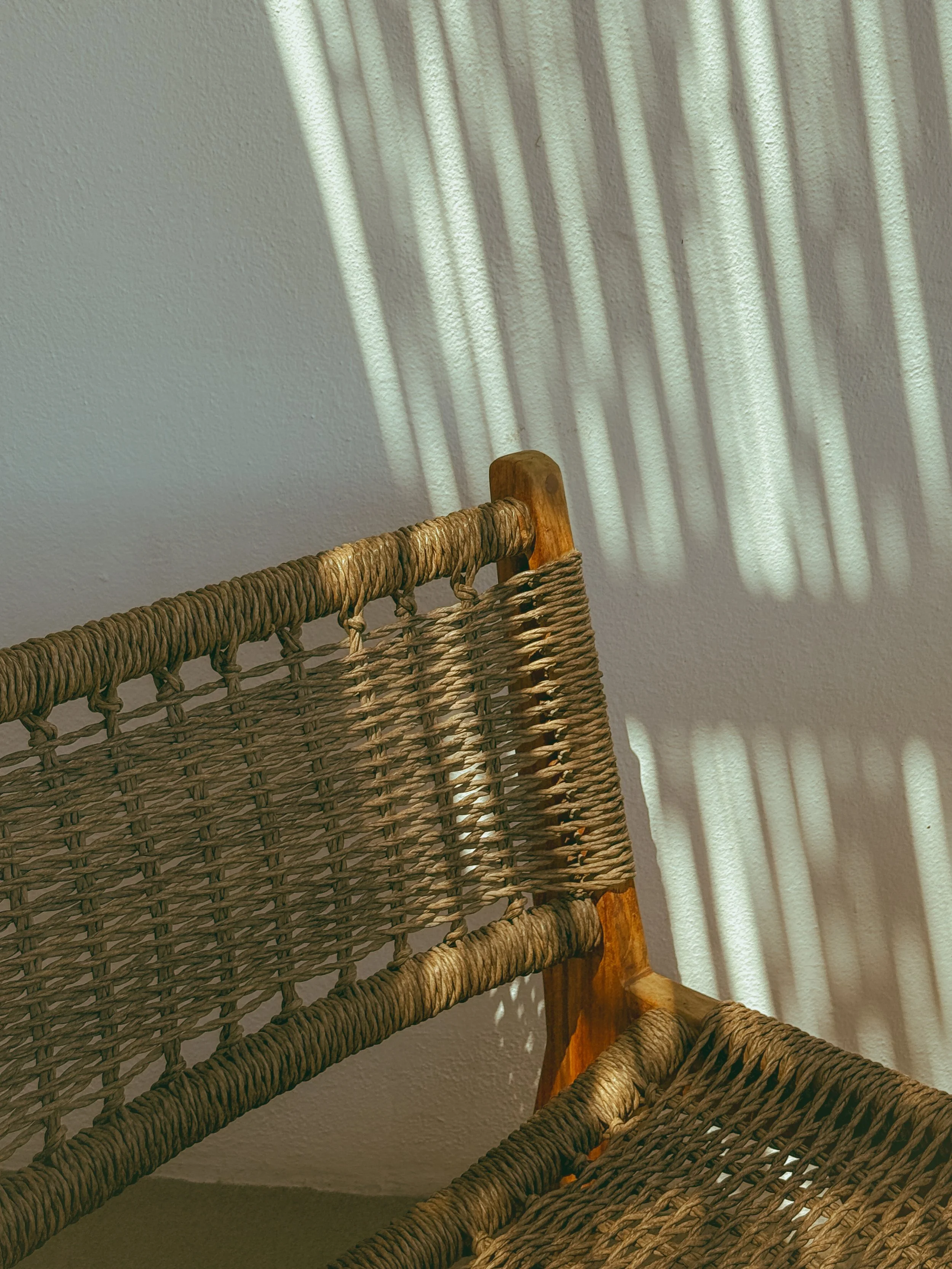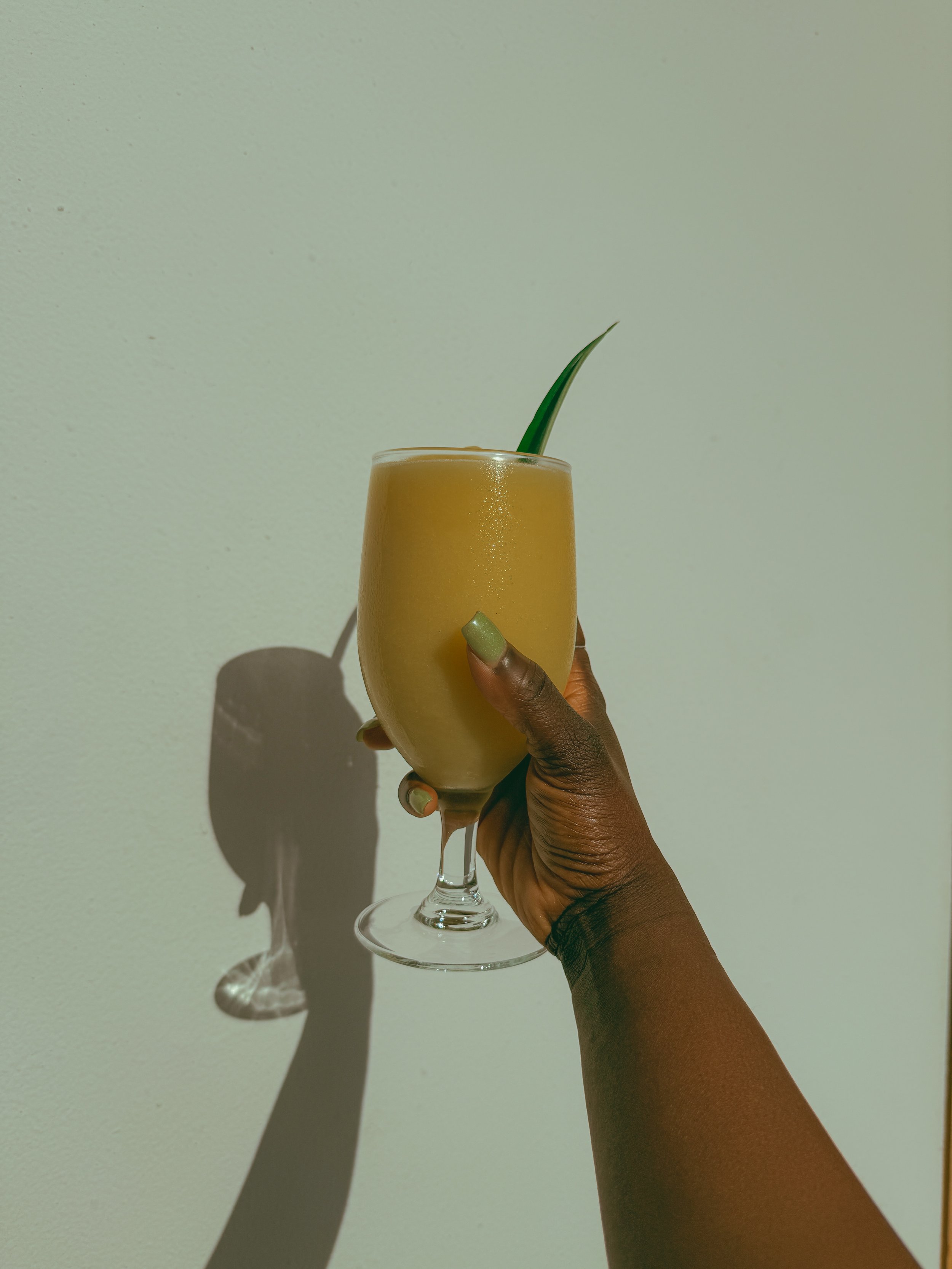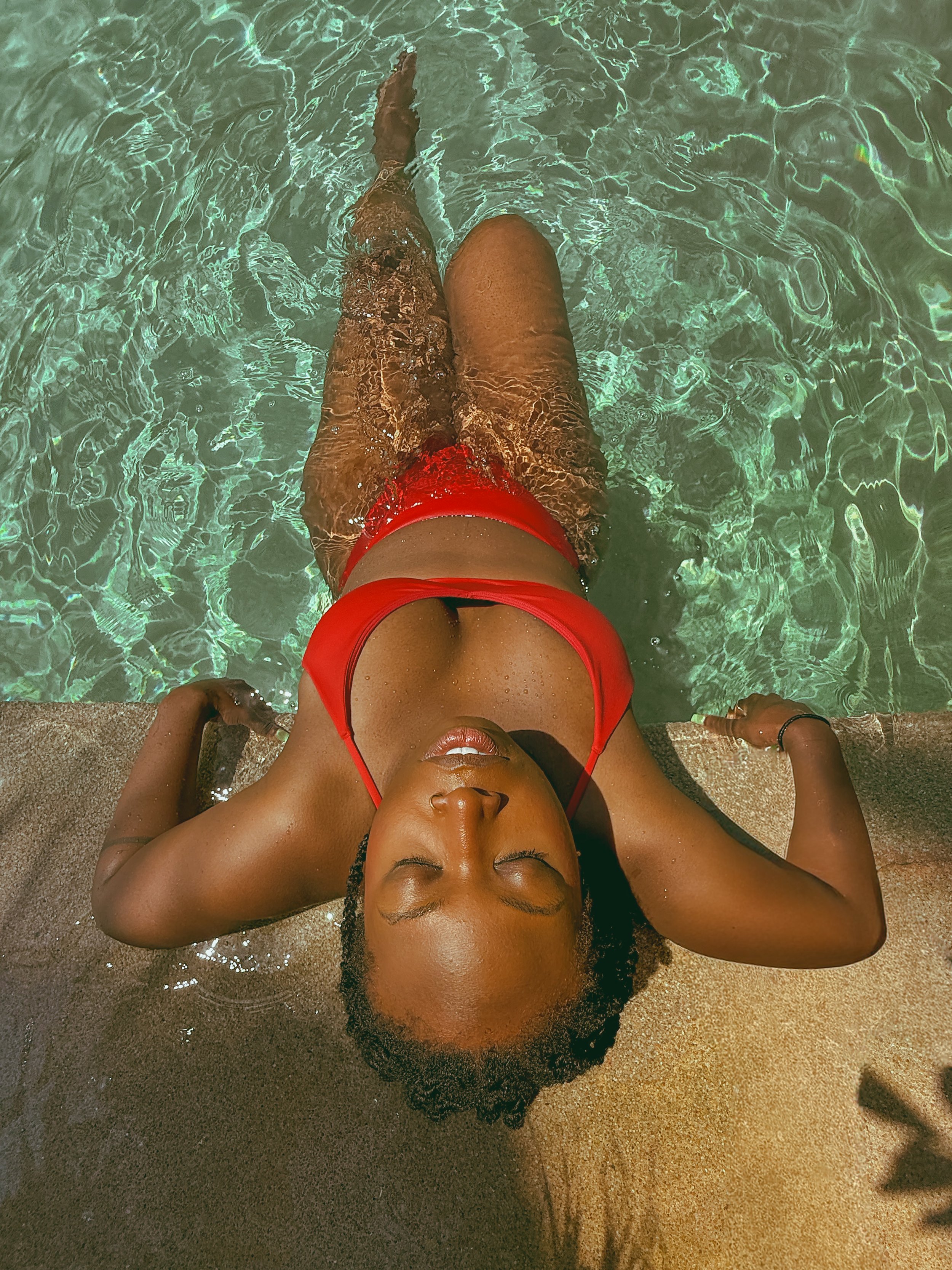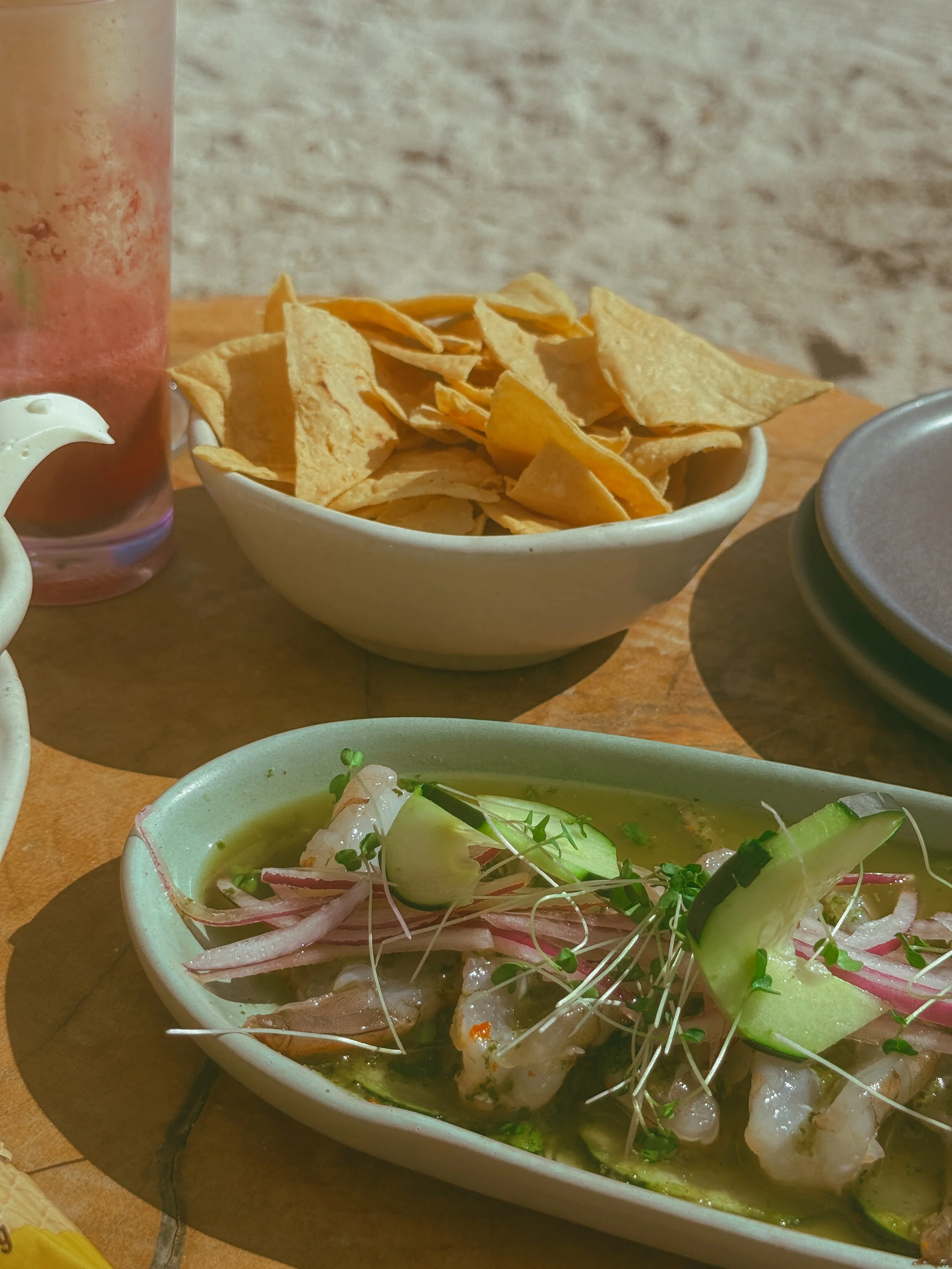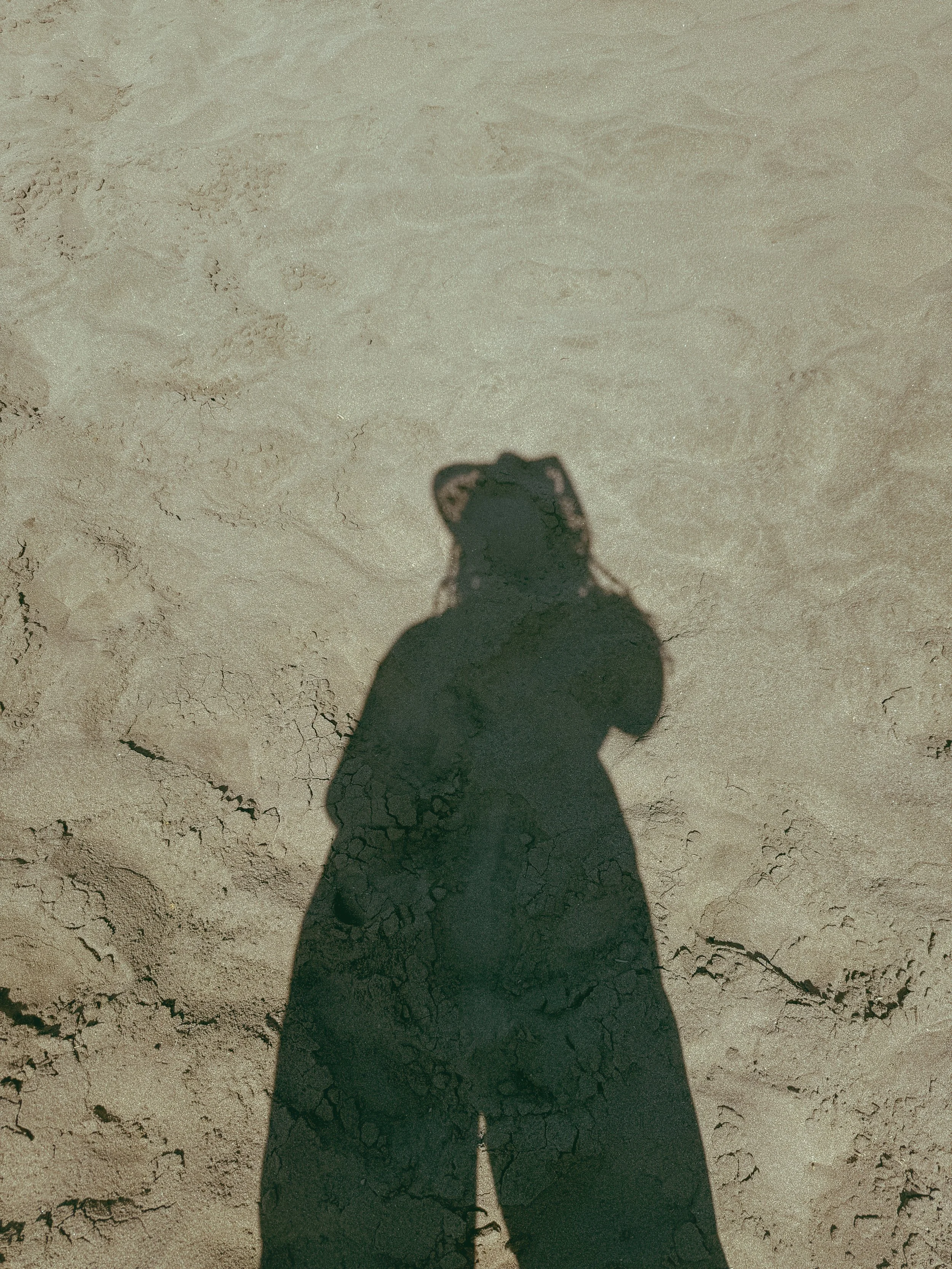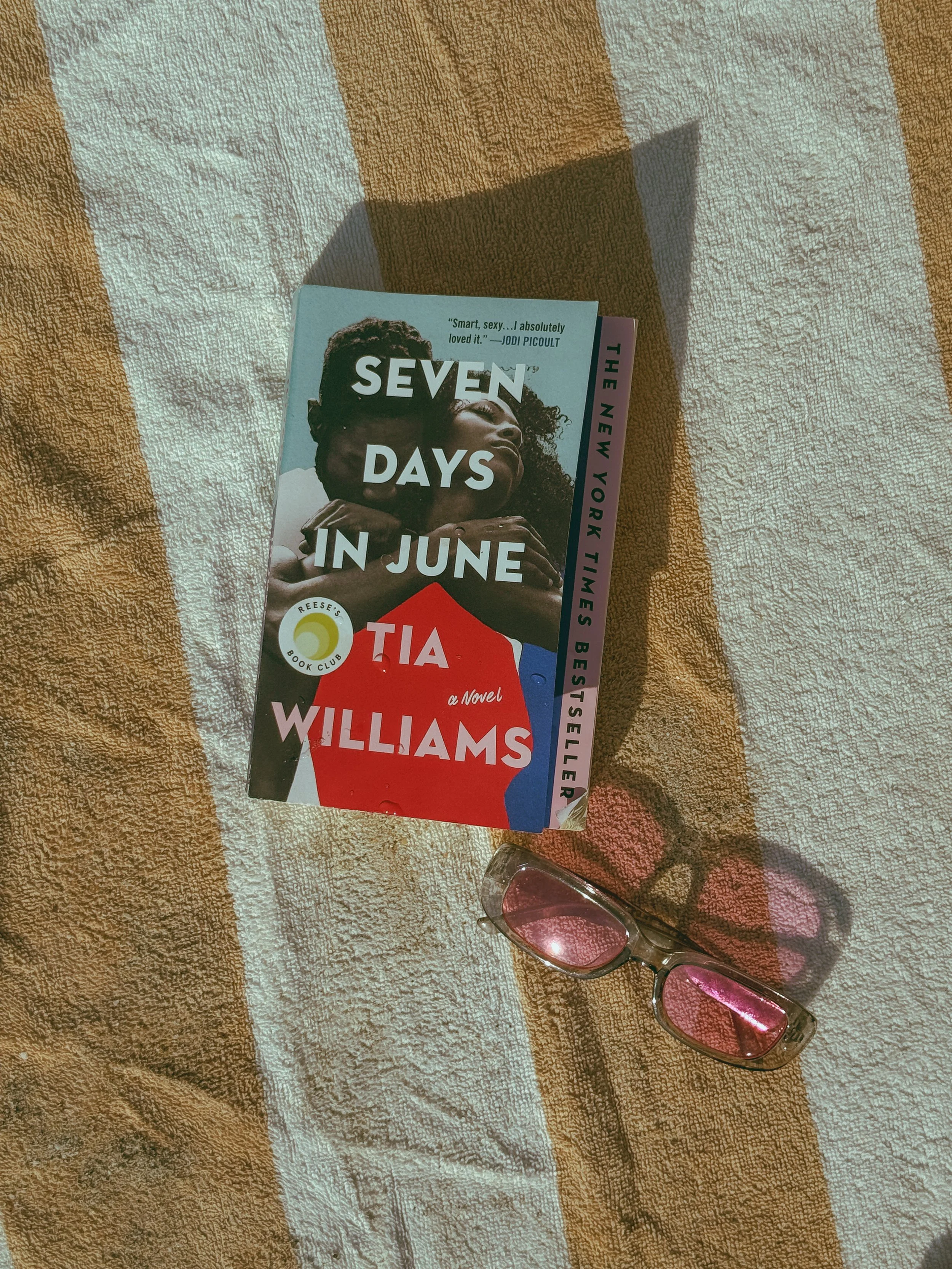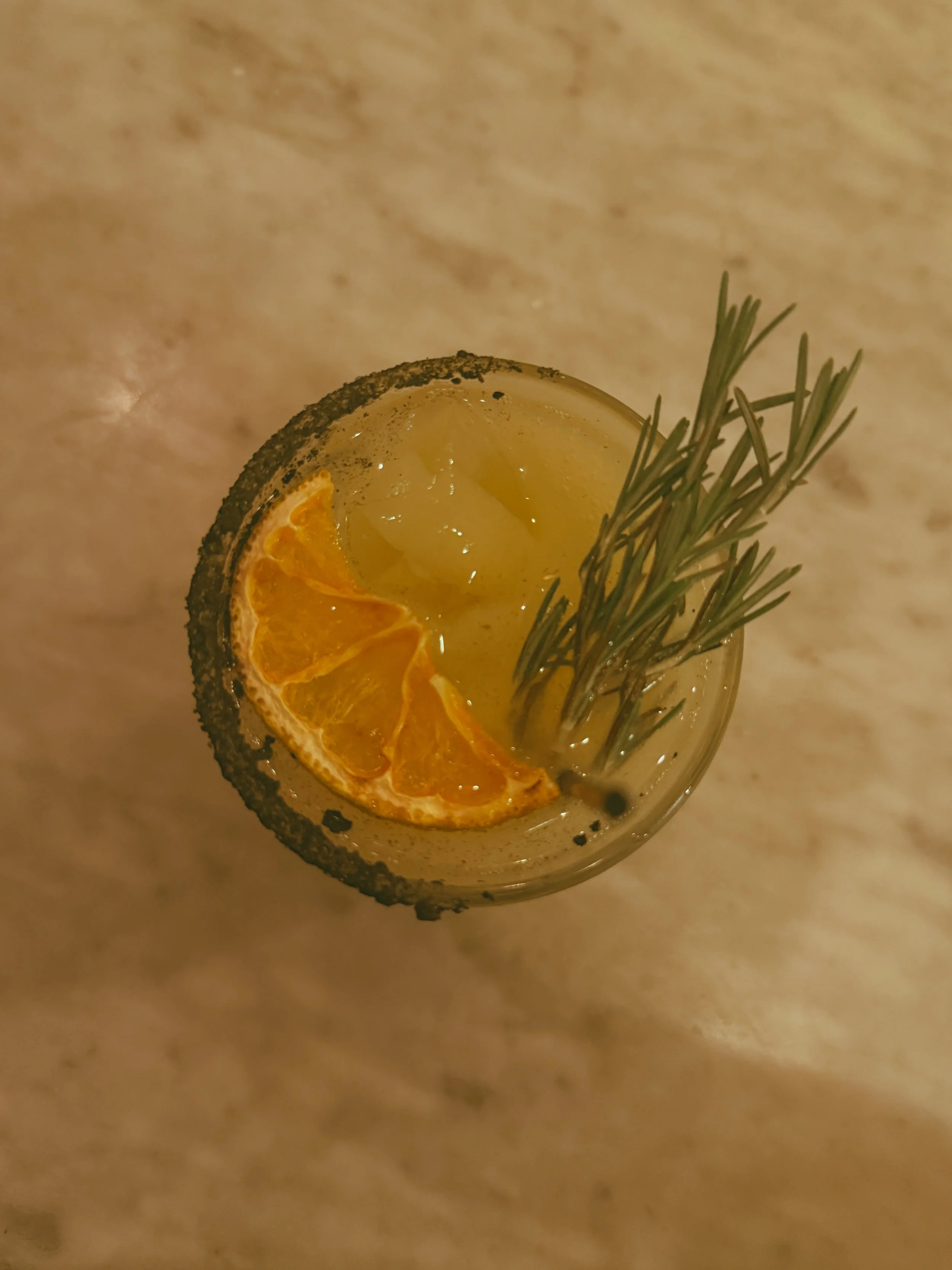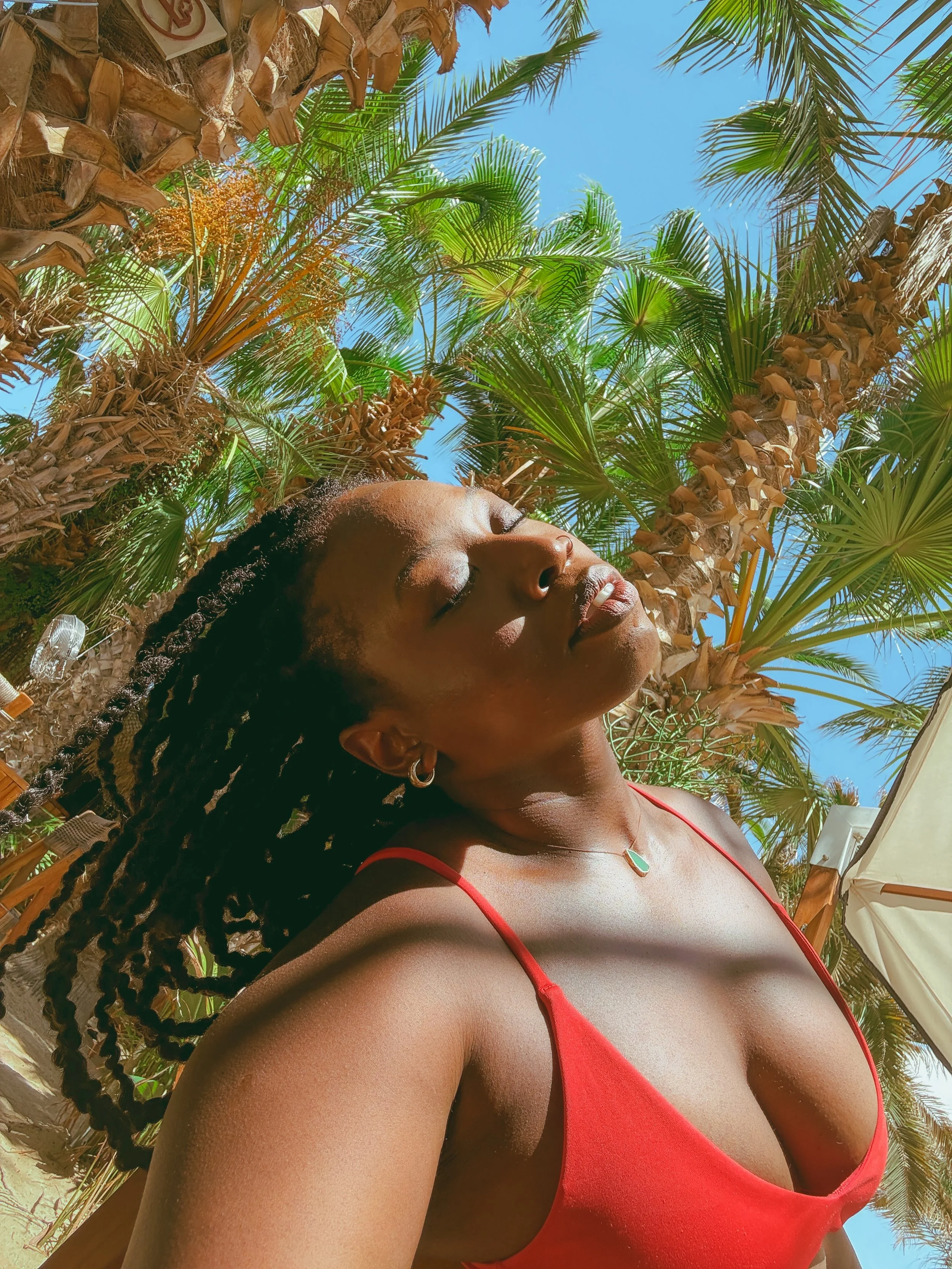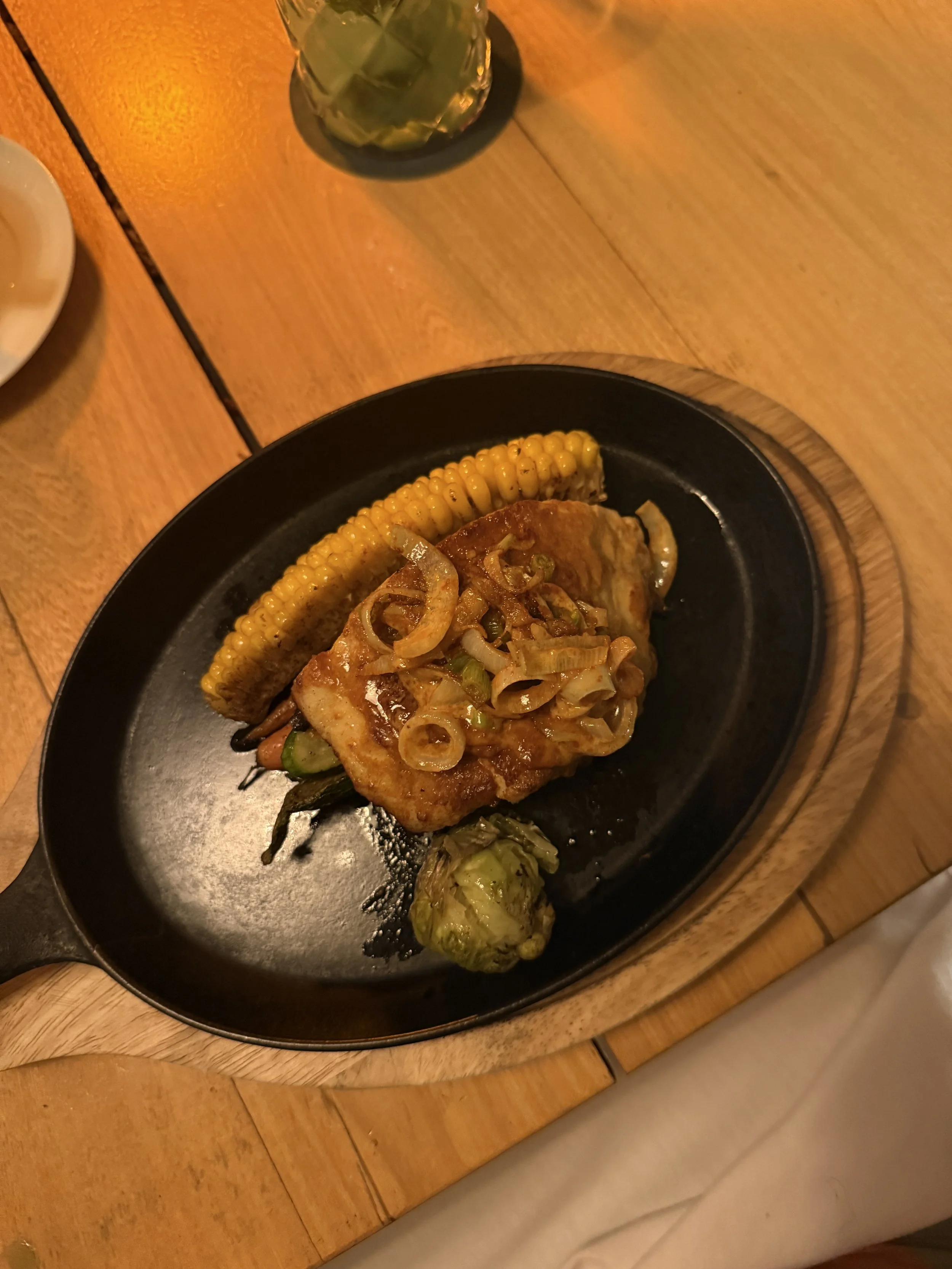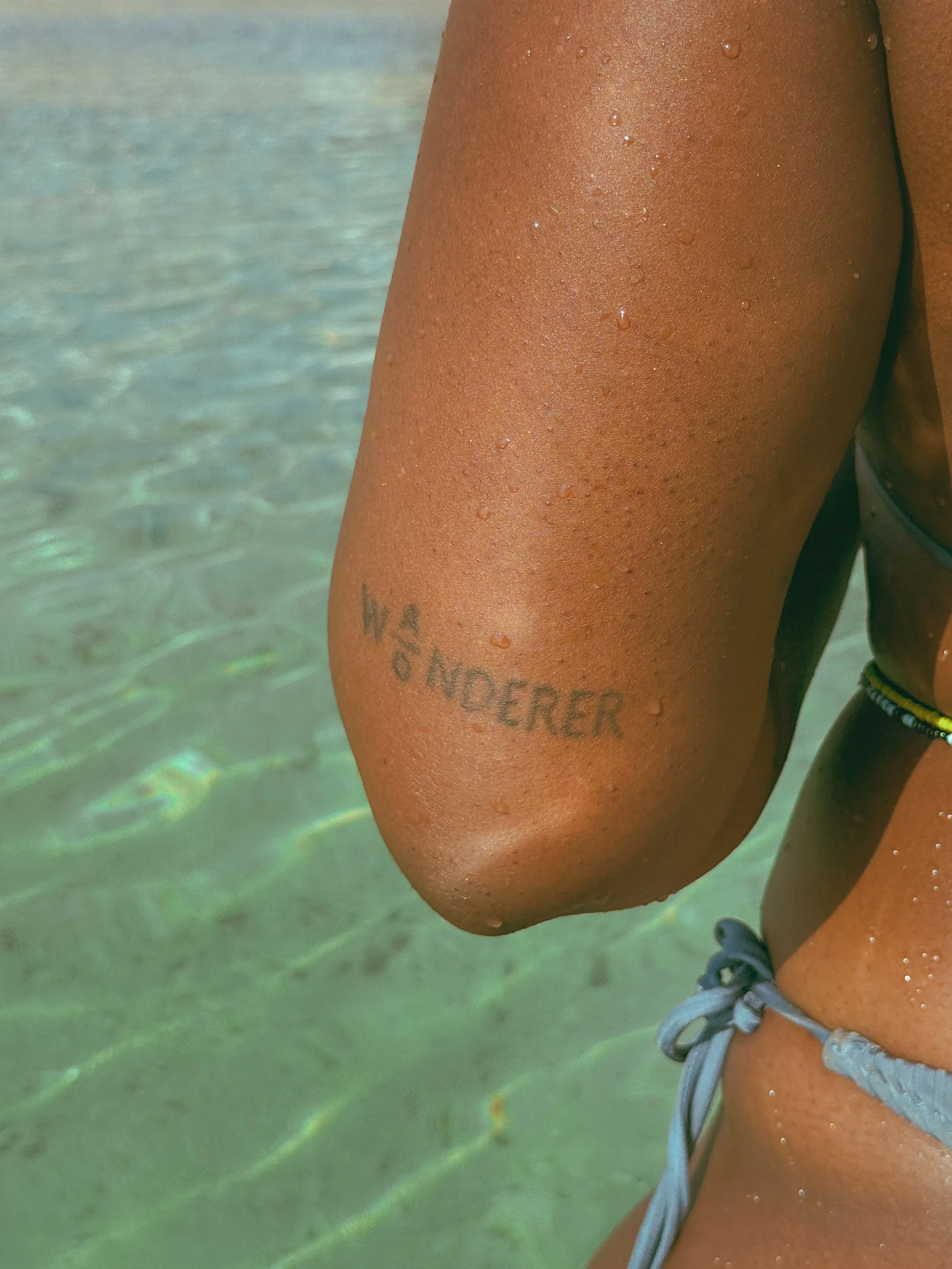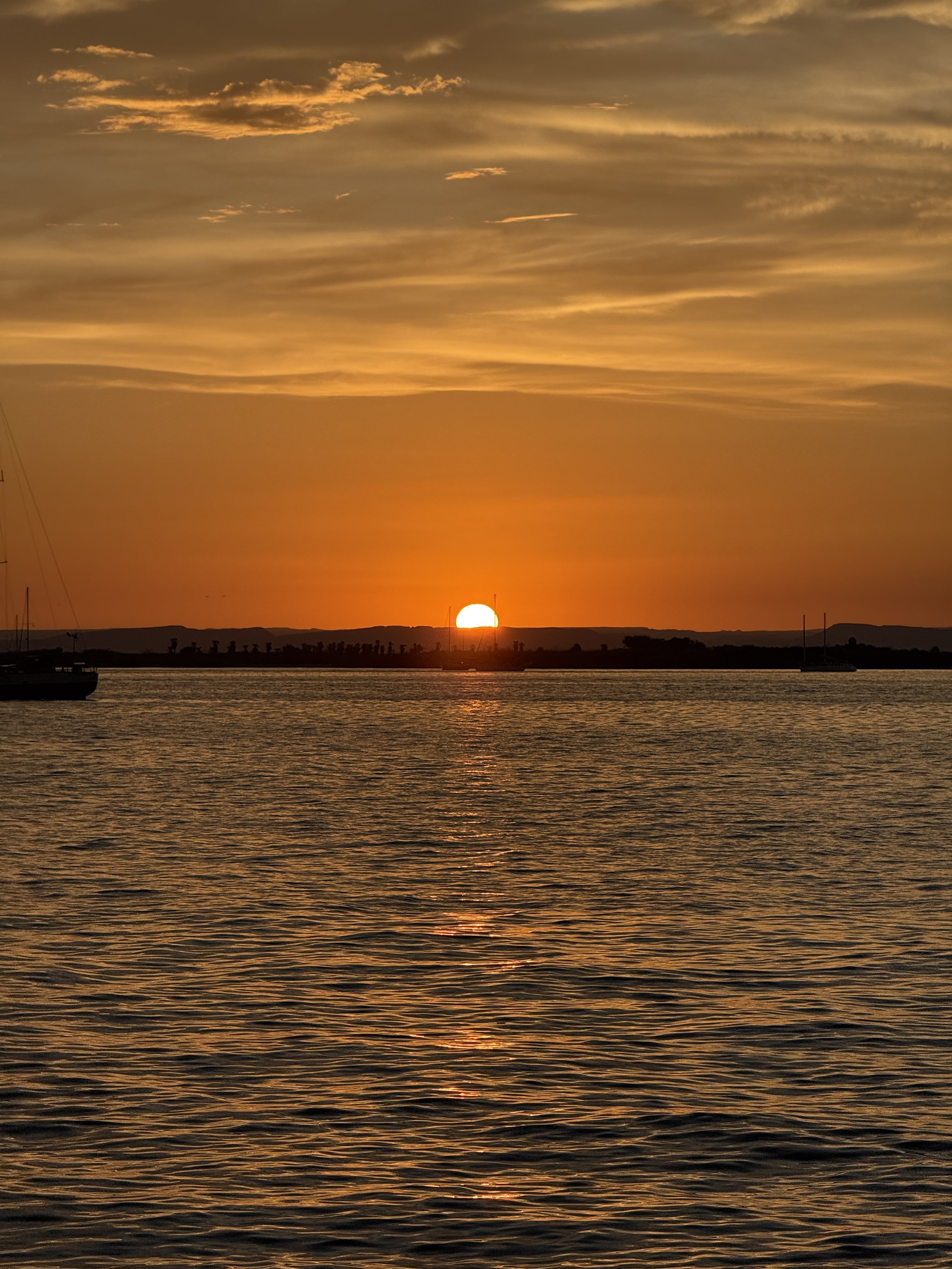How to Choose a Queer Wedding Photographer Who Gets It
Queer love deserves more than just pretty pictures—it deserves to be seen, felt, and remembered with tenderness. Here’s what to look for in a photographer who gets that.
Queer love holds layers. It’s softness and courage, history and reclamation, tension and truth. Not every wedding photographer knows how to hold that — and that’s okay. The goal isn’t to find someone who “tolerates” your story but someone who can honor it, emotionally and artistically.
Eloping or planning an intimate wedding isn’t less love; it’s just more you. And the person behind the camera should understand that.
1. Choose Someone Who Sees You
Representation isn’t a checklist — it’s a lens.
A good photographer isn’t just technically skilled; they create a space where you feel safe, at ease, and genuinely seen. Especially for queer couples, safety and emotional attunement are as important as lighting and composition.
2. Emotional Presence Over Poses
Some photographers direct. Others listen.
The difference matters. When someone is tuned into your connection, they’ll know when to step back, when to guide, and when to let a moment unfold naturally. That’s when images stop being pretty pictures and become heirlooms of feeling.
3. Ask About Their Philosophy, Not Just Their Portfolio
Beautiful photos are easy to post. A clear philosophy is harder to fake.
Ask questions like:
“How do you approach documenting queer love stories?”
“What moments matter most to you on a wedding day?”
“What does tenderness behind the lens look like for you?”
The answers will tell you whether they’re there to tell your story — or to use your love for content.
4. Look for Queer-Inclusive Language and Values
A website’s words matter.
Do they use gender-neutral terms? Show a variety of couples? Speak with authenticity rather than performative allyship? True inclusivity is woven into values, not hashtags.
If you’re not sure where to start, look at LGBTQ+ inclusive vendor directories or ask your photographer who they collaborate with. The company you keep says a lot.
5. Notice the Editing Style
Photos are emotional architecture. Editing shapes how your story feels.
Does their work feel warm, nostalgic, cinematic, honest? Or overly staged?
My own style at TIKA Studios is story-forward, timeless, soft contrast, and soul-aware — because how your love feels deserves to guide how it’s remembered.
6. Trust Your Gut
You’re not just hiring a vendor; you’re inviting someone into a sacred space. Tenderness is a non-negotiable. If it feels right, it probably is. If it feels off, honor that too.
Conclusion
Your wedding photos aren’t just about the day. They’re about the legacy.
Let your love be seen the way it feels — not just how it looks.
How to Plan a Queer Elopement That Feels Like You
You deserve a ceremony that feels like home. Here’s how to plan an intimate, artful queer elopement that reflects who you are—no rules, just tenderness.
(A Creative & Inclusive Elopement Planning Guide)
Not everyone dreams of a traditional wedding — and that’s more than okay.
For some, the thought of a big wedding feels more like a performance than a celebration. Maybe it’s the guest list politics, the outdated traditions, or the pressure to “do it right.” But eloping doesn’t mean your love is any less valid. It just means you're choosing a path that’s rooted in you — your story, your pace, your presence.
If you’re queer, creative, or simply someone who’s never seen themselves reflected in wedding magazines, this guide is for you. It’s not about rules. It’s about liberation. This is how to plan a queer elopement that feels artful, emotional, and true.
1. Start with Your Story, Not a Template
Let go of the Pinterest-perfect timeline and ask yourself:
What actually feels good to us?
This is your permission slip to build your elopement around values, not trends.
Do you want it to feel quiet? Wild? Spiritual? Playful?
Center your planning around intimacy, ease, and emotional safety. Think less about "what people normally do" and more about what you two actually care about — that’s where the magic lives.
2. Choose the Right Photographer (Not Just a Vendor)
Hiring a queer wedding photographer is about more than visuals — it’s about being seen.
You want someone who understands body language, emotional nuance, and the quiet sacredness of queer love. Someone who won’t just tell you to "smile at the camera" but will witness your story with tenderness and depth.
At TIKA, I approach elopements with a presence-led, editorial style. My work is soft, emotionally intelligent, and rooted in emotional storytelling photography — because the real beauty is in the in-between.
3. Rethink What an “Elopement” Can Be
Forget the clichés. Your ceremony can be a sunrise journaling ritual by the ocean. A barefoot vow exchange in the redwoods. A rooftop picnic in the city where you met.
Some of the most moving elopements I’ve photographed weren’t rehearsed or staged. They were real. Messy, beautiful, cinematic in their own right.
This is your chance to redefine romance on your own terms — to plan a day that feels like a love poem.
4. Work With Vendors Who Truly See You
Every vendor you bring in should feel like a collaborator — not just a checkbox. Seek out LGBTQ+ inclusive vendors, queer-owned businesses, and creatives who value representation without tokenizing your love.
Ask questions. Trust your gut. If someone makes you feel “othered” or unseen in any way, move on.
You deserve a team that’s aligned with your values — not just your budget.
(Need a few recommendations? I’ve got a list of soft, soulful, radically inclusive vendors who get it.)
5. Build a Timeline That Breathes
You don’t need to cram your elopement into a jam-packed schedule.
In fact, some of the best moments happen in the in-between:
Sipping tea before you get dressed. Holding hands in silence. A spontaneous dance under the sky.
Leave room for slowness. Let your timeline stretch. Build in space for tears, laughter, and the kind of stillness that makes the heart feel full.
6. Add Artful Touches That Matter to You
Your elopement doesn’t need to be extravagant to be unforgettable.
A few ideas:
Polaroids for analog nostalgia
Handwritten vows sealed in a book or tucked into your jacket
Vintage rings with their own stories
Barefoot dancing at golden hour with your favorite song playing from a speaker
Let your details be personal. Sensual. Symbolic. Because this isn’t about impressing anyone — it’s about making memory sacred.
Conclusion: Your Love Is Not a Performance — It’s a Poem
Your queer love deserves softness, celebration, and space to be exactly what it is.
You don’t have to prove it to anyone. You just have to honor it.
So here’s your reminder:
Your elopement doesn’t have to look like anyone else’s to be meaningful. It only needs to feel like home.
And if you need someone to document the quiet, the wild, and the real — I’m here. Camera in hand. Heart wide open.
Editorial LGBTQ+ Wedding Ideas
A visual guide to modern, editorial LGBTQ+ wedding inspiration — from ocean-lit ceremonies to bold, gender-expansive styling. Curated by queer San Diego photographer TIKA Studios, this gallery centers Black, queer, and trans love in full view.
Queer Weddings Deserve to Be Art
Not just documented — but designed, felt, and remembered.
This gallery is a love letter to every couple rewriting the narrative: the ones bringing color, concept, and clarity into spaces that weren’t always built with them in mind. It’s for the ones curating weddings that reflect their truth — not tradition.
Whether you’re planning a celebration, elopement, or styled shoot rooted in queer joy, this space is here to spark ideas and affirm that your vision doesn’t need permission. It just needs intention.
What Makes a Wedding Editorial?
An editorial wedding is rooted in concept, emotion, and aesthetic clarity. It’s not about excess — it’s about expression.
In this collection, you’ll find inspiration for:
Unconventional venues: think museums, coastlines, aquariums, creative spaces
Statement styling: bold suits, layered textures, gender-expansive silhouettes
Candid connection: emotional storytelling over stiff posing
Queer-centered presence: every detail rooted in identity, not assimilation
This is what love looks like — when it’s unfiltered, unafraid, and held with care.
Why Representation in Wedding Photography Matters
Weddings are some of the most photographed moments in people’s lives — and yet so often, queer love, trans joy, and Black intimacy are filtered out or made to conform.
At TIKA Studios, I’m not just capturing what’s in front of me — I’m documenting what’s often been excluded: tenderness, ease, imagination, and presence. Especially for those of us who never saw ourselves in bridal magazines or Pinterest boards growing up.
This gallery exists as a visual refusal. A slow, soft YES.
Looking for a Queer-Inclusive Wedding Photographer?
If you’re a couple dreaming up something beautiful, creative, or entirely your own — I’d love to hear what you’re envisioning. Whether it’s a small ceremony in San Diego or a destination celebration filled with editorial flair, I bring care, clarity, and storytelling to every frame.
Slow Mornings + Saltwater: My Stay in La Paz, Mexico
A photo-forward lifestyle travel diary from La Paz, Mexico — slow mornings, shrimp tacos, and what it means to rest well by the water. Featuring real travel tips, soft visuals, and a note on why August might be the perfect time to go.
If you're craving a reset that doesn’t require a 12-hour flight or five browser tabs of logistics, let me offer you this: La Paz, Mexico.
I visited in August, which I now realize was exactly the right time. It’s considered low season, which means quieter beaches, better availability at local spas and restaurants, and a slower pace all around. Yes — it’s hot hot. But the ocean? Perfect. That turquoise, body-temperature kind of water you dream about. If you’re someone who wants to float, soak, and swim without a wetsuit or chill — this is your window.
We arrived Friday and left Tuesday morning, staying at Hotel Indigo — a boutique hotel with clean design, great location, and surprisingly good food. (More on that below.) This wasn’t a “pack it in” kind of itinerary — it was curated for rest. For presence. For story-worthy slowness.
As a Photographer, Here’s What I Noticed
As someone who documents visual stories for a living, I couldn’t help but be struck by the color story of La Paz. The pastel tones, the clear light, the way water reflects onto skin at golden hour — it’s a photographer’s dream. Whether you’re planning a destination session, a queer elopement, or just want to fill your camera roll with actual art, this city delivers.
TIKA Studios was built around noticing softness in radical places. La Paz — even in its stillness — gave that back.
Trip Overview (Friday–Monday)
Friday
We landed, unpacked, and immediately hit the beach + pool. No agenda. Just warm wind, sun on skin, and a camera I barely had to reach for — everything was already beautiful.
Saturday
We scheduled a sandboarding excursion for the early morning. If you’re doing something active or high-energy, front-load it. You’ll thank yourself later. Afterward, we spent the afternoon at Hotel Indigo’s beach club, ordered lunch, swam, read, and lounged hard.
That night, we had dinner at Buzos. Their shrimp tacos were everything, and their guava cocktail might’ve been one of the best I’ve had in Mexico — not sweet, just balanced and refreshing.
Sunday
Another early activity — this time a beach tour. Our intention was to see more of La Paz while still moving slowly. After the tour, we returned to the hotel to read and rest before dinner at BARCO, the on-site restaurant.
Monday
We booked massages at Damiana Spa — and let me say this with my full chest: one of the best massages I’ve had in years. Afterward, we wandered through downtown La Paz, took a few photos, grabbed drinks, and ended the trip the way it began: lounging.
Travel Tip for SoCal Folks
If you’re based in Southern California, flying out of Tijuana (TIJ) can save you hundreds. Use the Cross Border Xpress (CBX) terminal in San Diego — it lets you walk directly into the Tijuana airport from the U.S. It’s fast, efficient, and gets you access to much cheaper flights into Mexico, including La Paz.
Best Time to Visit La Paz, Mexico
Low Season (July–September): Hot weather, warm water, fewer tourists, better availability at restaurants and hotels
High Season (November–April): Cooler temps, peak whale shark season, more crowds
Best Months for Beach Lovers: August + September — if you don’t mind heat, you’ll love the water
Queer Wedding at Birch Aquarium
Sofia and Penelope’s romantic wedding at Birch Aquarium was a love letter to the sea. This queer celebration, captured by San Diego wedding photographer TIKA Studios, was intimate, ocean-honoring, and deeply intentional.
The Story Behind the Sea
Sofia and Penelope’s love began the way many great loves do — quietly, over time. They met in college, became friends, drifted, then found their way back to each other. Sofia taught Penelope how to surf during a trip to Hawai'i, where their bond deepened with every wave. The ocean became a language they both spoke — a place of return, of rhythm, of reflection.
So it only made sense that when they decided to marry, they chose the Birch Aquarium in La Jolla, a place that had quietly held pieces of their story for years. It wasn’t just a venue — it was part of their memory, their ritual, their softness.
A Wedding Rooted in Meaning
The ceremony took place beneath the glow of kelp forests and gentle ocean light. Sofia and Penelope exchanged vows surrounded by loved ones — and the quiet presence of sea creatures gliding by. It was intimate, tender, and entirely theirs.
There were no theatrics, no performance. Just deep love. Intention. Laughter. Saltwater in the air. And joy that didn’t need permission to exist.
As a queer wedding photographer in San Diego, these are the moments I live for — the ones that feel like real life, not just a Pinterest board. From their beachside kiss to the way they adjusted each other's dresses without a word, it was clear: this was home.
Why Birch Aquarium Is a Gem for LGBTQ+ Weddings
If you're planning a wedding in Southern California and want something untraditional, natural, and queer-inclusive — the Birch Aquarium is a dream.
Whether you're a couple who:
Feels at home by the ocean
Shares a love of marine life
Wants a venue that honors queer love in all its forms
Or simply wants something soulful and unique
This space offers calm, beauty, and depth.
Vendors + Inspiration
Photography: TIKA Studios – Queer & Inclusive San Diego Wedding Photographer
Venue: Birch Aquarium
Want to co-create something beautiful, honest, and presence-led?
Let’s work together
Why Inclusive Photography Matters
Love isn’t one-size-fits-all. And wedding photography shouldn’t be either.
Inclusive photography means:
Making space for your full identity — no questions asked.
Documenting queer, Black, trans, and nonbinary folks with care.
Honoring the joy and softness of love that’s often politicized just for existing.
You deserve to feel seen. You deserve imagery that reflects you honestly — not posed, not filtered through someone else’s lens of “what weddings should look like.”
That’s what I offer at TIKA Studios. Let’s make your presence permanent.
Trans Joy & Tenderness: A Queer Coastal Elopement
Alana (they/them) and Ovi (he/him) didn’t just elope—they redefined what freedom, tenderness, and queer visibility can look like. Photographed along the bluffs of San Simeon by San Diego-based TIKA Studios, this intimate celebration is a love letter to joy, gender euphoria, and choosing each other.
While I was photographing Alana (they/them) and Ovi (he/him), they shared something that stuck with me: how hard it was to find queer, trans-centered wedding inspiration—on Pinterest, on Google, anywhere.
So we made the kind of images they couldn’t find. Images rooted in joy, ease, and tenderness.
We headed to the coastline of San Simeon, California—with just the two of them, a handful of their loved ones, their story, their suits, and the sea. The wind moved like music. The pace slowed. Everything felt sacred.
A Love that Moves Without Permission
This elopement wasn’t just about vows or flowers or coastal views (though all those things showed up in full force). It was about reclaiming softness—about taking up space in a world that so often tries to reduce trans and queer love to hashtags or headlines.
This was about two people who love each other so deeply, so steadily, that it had to be witnessed.
The Suits, The Rings, The Meaning
Let’s talk style. Alana wore a suit by Maje, and Ovi’s was from Suit Supply. Their wedding rings were crafted by Automic Gold — a trans-owned jewelry company based in New York, creating timeless, inclusive pieces with heart. Their engagement rings were from VRAI, which focuses on sustainably created diamonds.
Their hair was styled with guidance from Arlen Farmer, a queer stylist based in LA and owner of Brindley Salon, known for working magic with curls and affirming energy alike.
Visibility isn’t performative. It’s legacy work. And this team honored that.
Location: San Simeon, California
While TIKA Studios is proudly based in San Diego, I often travel across California to document intimate moments like this. San Simeon’s cliffside serenity felt like the perfect setting for Alana & Ovi—free, grounded, and boldly themselves.
For Those Searching
If you’ve been combing Pinterest, Instagram, or Google searching “queer elopement inspo” or “trans-inclusive wedding photography,” I hope you find this post. I hope it reminds you that joy belongs to you, too.
If you’re a trans man, nonbinary person, or queer couple navigating what to wear or how to be seen—read Ovi’s Substack piece. It speaks to the layered grief and radical grace of gendered milestones.
And if you're looking for a photographer who gets that—who moves slowly, with care and reverence for your full self—you’ve found her.
Vendors That Made the Magic
Hair Stylist: Arlen Farmer, owner of Brindley Salon
Wedding Rings: Automic Gold (trans-owned, NY-based)
Engagement Rings: VRAI
Alana’s Suit: Maje
Ovi’s Suit: Suit Supply
Ready to Be Seen?
If you’re planning a queer wedding or elopement in San Diego, California, or beyond—I'd love to photograph your softness, your joy, your resistance. Hit me up!
Black Leisure, Recentered: Reclaiming Space, Declaring Presence
A reclamation of what was once denied. This editorial repositions Black leisure as essential, not exceptional — photographed poolside at The Lafayette in San Diego, where elegance becomes resistance, and presence becomes power.
Search vintage archives, flip through old magazines, or scroll Pinterest — and you won’t find her there. For decades, poolside leisure and luxury told a narrow story.
Black Luxury, Recentered corrects that absence, not with spectacle, but through intentional presence.
Set against the retro backdrop of The Lafayette — once a place where Black people were often either excluded or marginalized — this series insists on reframing history. It places Black elegance exactly where it always belonged: center stage.
Historical Echoes & Cultural Context
In the Jim Crow era, many municipalities preferred to close public pools entirely rather than share them with Black swimmers — reinforcing the shame and neglect of segregation. Stories like that of David Isom, a 19‑year‑old who courageously desegregated a Philadelphia pool in 1958, remind us: these weren’t just bodies of water—they were frontlines of resistance This isn’t passive history—it’s living legacy. These photos counter that erasure by thoughtfully placing a Black muse by the pool, sunlit and unashamed.
Through the Lens of Representation
What you see: a Black muse poolside at Lafayette, draped in calm authority—bold lips, sunlit skin, private presence.
What it means: more than leisure. It’s reclamation. Quiet audacity. Editorial elegance rooted in lived history.
What it whispers: “Luxury isn’t inherited—it’s authored.”
Why Brands Should Care
This isn’t just pretty imagery—it’s editorial storytelling with purpose. It speaks to culture, honesty, and emotional resonance.
High‑end brands, arts publications, and mission‑driven clients will recognize this as more than portraiture—it’s a movement. TIKA offers visuals that hold space and shape dialogue.
Conclusion
This is not recreation. It is reclamation—quiet, undeniable, essential. Representation doesn’t bend to trends. It becomes the narrative.
Here, by the pool at Lafayette, luxury speaks her language.
View the gallery here.
Key Links & Sources
Meet David Isom—the teen who broke a color line at a segregated pool gawatersafety.org+4becauseofthemwecan.com+4blackpast.org+4
NYTimes: How Black people were kept out of U.S. pools
USA Today: The lasting fallout from segregated pools reddit.com+11usaswimming.org+11becauseofthemwecan.com+11
HuffPost: History of segregated parks & pools en.wikipedia.org
The Colors That Never Miss: What to Wear for Photos Based on Your Skin Tone
Choosing the right color can elevate your entire photoshoot. These are the shades that look stunning in photos — and work beautifully on every skin tone.
Whether you’re stepping into your first editorial shoot or your fifth creative era, one question always comes up:
“What should I wear that actually looks good in photos?”
If you’ve got melanin-rich skin, the usual Pinterest boards filled with beige on beige and washed-out whites? They won’t do you justice. At TIKA Studios, I’ve photographed artists, creatives, and humans across the spectrum of brown — and here’s what I know:
The right color doesn’t just match your outfit — it magnifies your presence.
Let’s break down the tones that consistently photograph beautifully on Black and brown skin, and why they always hit.
Earth Tones — The Holy Grail
Examples: Burnt sienna, olive green, rust, camel, terracotta, ochre, chocolate brown
These tones aren’t just "neutral" — they’re rooted. They reflect light softly, add warmth to the skin, and never fight for attention. Deep tones like sienna and espresso bring dimension, while muted greens and golds evoke natural balance.
Why it works: Earth tones harmonize with undertones found in deeper complexions — especially golden, red, and olive-based hues.
💡 Styling tip: Try monochrome layering (like a rust blouse and deep brown trousers) or pair with textured fabrics like linen, wool, or denim.
Jewel Tones — Vibrancy Without the Loud
Examples: Emerald, amethyst, deep teal, ruby, mustard, indigo
These colors radiate. They pop against melanin without feeling artificial — and they show up rich on both film and digital.
Why it works: Jewel tones are naturally high in saturation, making them ideal for darker skin tones that reflect light differently than lighter tones.
💡 Styling tip: An emerald dress, a sapphire top, or even a plum coat can act as a statement piece without overwhelming the image. Add gold or brass jewelry to anchor the look.
Warm Neutrals — The Underrated MVPs
Examples: Warm taupe, cocoa, dusty rose, almond, sandstone, soft copper
Forget cold grays and flat whites. Warm neutrals elevate deeper skin without draining color from your face. These tones act as quiet confidence — soft, yet intentional.
Why it works: They enhance your skin’s natural glow and bring out subtleties in undertone — especially for mid-brown to deep skin tones.
💡 Styling tip: These tones are perfect for studio sessions or soft, natural light settings. Combine with minimal makeup and dewy skin for editorial softness.
Black (Yes, You Can — and Should)
Black isn’t basic when it’s used with power. It adds structure, boldness, and drama — especially in black & white edits or contrast-rich lighting.
Why it works: It grounds the image and makes your skin shine. When paired with strong posture or movement, it reads editorial every time.
💡 Styling tip: Choose textured fabrics like silk, velvet, or ribbed knits. This helps black photograph rich rather than flat.
What to Avoid (or Use Sparingly)
Bright white: Can over-reflect in sun and wash out contrast unless styled very intentionally.
Neon: Distracts from your presence and often photographs harshly.
Pale pastels: These can flatten deeper skin tones unless balanced with bolder accents or deeper makeup hues.
Shiny synthetics: Can catch light awkwardly and look cheaper on camera than IRL.
Final Thought: Let the Color Match Your Energy, Not Just the Aesthetic
You’re not here to fit in. You’re here to show up fully.
When we work together, I’ll help guide you toward looks that don’t just look good — they feel right. Because when you wear something that amplifies your truth, the camera sees it. The image holds it.
Your skin is not a backdrop — it’s the art.
Let’s dress it accordingly.
📍Based in San Diego, shooting anywhere the light calls.
Ready to book your editorial portrait session? Let’s connect.
What Sets Editorial Photography Apart — and Why It Matters
Editorial photography isn’t just stylized — it’s story-led, cinematic, and conceptual. Here’s what sets it apart and why it matters more than ever.
In a scroll-happy world filled with curated content, editorial photography does something rare — it slows you down. It invites you to see, not just look. It doesn’t just showcase the subject; it tells a story through presence, environment, and intention.
As a San Diego-based editorial photographer, I often get asked: What even is editorial photography? Isn’t it just stylized portraits? Not quite.
Let’s break it down — and why it’s the heartbeat of everything I create at TIKA Studios.
1. Editorial Photography Is Story-Driven
While traditional portraits focus on the person, editorial portraits focus on the narrative. It’s not just about what you’re wearing or how you’re posing — it’s about what the image is saying.
Are we capturing resilience? Mystery? Power? Softness? Grief? Joy?
Editorial work moves beyond vanity. It evokes feeling. It asks questions.
This is the style of photography you see in magazines like Vogue, The Cut, or Harper’s Bazaar — where the subject isn’t selling a product, they’re inhabiting a story.
2. It’s Cinematic and Conceptual
Editorial doesn’t rely on trend — it leans into vision.
The lighting, location, styling, and body language are all intentional, working together like a scene from a film. It’s visual storytelling that doesn’t need a caption to be understood.
At TIKA Studios, I often blend film and digital formats, sculpt light like it’s mood, and give room for the subject to breathe. Whether we’re shooting on a street corner, in a studio, or on stage, editorial photography creates an atmosphere.
3. Editorial Builds Brand and Identity
Whether you're an artist, creative entrepreneur, or public figure, editorial portraits can help shape how you’re perceived — and not in a manufactured way. Think press kits, magazine features, album visuals, and author profiles. It’s not just about looking “put together.” It’s about looking like yourself — elevated, centered, and clear.
When done right, editorial photography communicates:
I know who I am.
I’ve done the inner work.
I’m not trying to convince — I’m just showing up.
That’s power. That’s magnetism.
4. Editorial Work Has Longevity
You know those photos you never get tired of? The ones that still hit years later?
That’s editorial.
Because it’s not following a moment — it’s capturing a mood. It holds up across time because it’s rooted in something deeper than algorithm trends.
Final Word
Editorial photography isn’t just a style — it’s a philosophy.
It asks: What truth can we reveal here?
It honors presence over perfection. Energy over aesthetics.
And it matters because when people feel seen in that way, they carry that confidence into everything they do.
If you’re looking for San Diego editorial photography, artist portraits, or imagery that captures the why behind the visual — I’d love to work with you.
Curious about a shoot? Reach out here or visit the Portfolio to see more editorial work.
How to Prepare for an Editorial Portrait Session
Editorial portraits aren’t just photos — they’re presence, identity, and intention in frame. Here’s how to prepare for a portrait session that feels true to you.
Whether you're an artist, entrepreneur, or creative, an editorial portrait session is more than just a photoshoot — it’s a visual story. These portraits don’t just show what you look like. They reveal your presence, your essence, and the way you take up space.
As a San Diego-based editorial photographer working with artists, creatives, and changemakers, I’ve seen firsthand how a little prep goes a long way — not for the camera, but for you. Here’s how to prepare for a shoot that feels effortless, aligned, and true to who you are.
1. Clarify Your Intention
Ask yourself: What do I want these photos to communicate?
Editorial portraits can be bold, quiet, raw, or styled. But they should always feel like you, not a costume. Are you entering a new creative era? Rebranding? Telling a story? Bringing this clarity helps guide the shoot without boxing you in.
💡 Pro Tip: Share references, songs, colors, or textures that inspire you. Moodboards aren’t just trendy — they’re a creative blueprint.
2. Dress Like Yourself — But Elevated
Think of it like this: you on your best day, not you in disguise.
Clothes should complement your vibe, not compete with it. Editorial doesn’t mean over-the-top unless that’s your truth. Neutral tones, strong silhouettes, interesting textures — these all photograph beautifully. Avoid overly busy patterns or logos unless it’s intentional.
💡 Bring options. Even 2–3 looks can offer variation without overwhelming the shoot.
3. Rest, Hydrate, and Ground Yourself
This isn’t just vanity — it’s energetic. A well-rested, grounded body photographs differently. The camera picks up more than angles; it picks up presence.
Drink water. Stretch. Breathe. Take space the morning of the shoot to be with yourself. The goal isn’t perfection — it’s alignment.
4. Trust the Photographer (aka Me)
When we shoot together, you’re not just stepping in front of a lens — you’re stepping into a safe space. I’ll guide you, direct with intention, and read the energy. You don’t have to perform. You just have to show up.
Together, we’ll co-create something honest, cinematic, and resonant. That’s the TIKA approach.
5. It’s More Than Photos — It’s Your Legacy
The right editorial portrait session can change how people see you — but more importantly, it can change how you see yourself. These images often become part of press kits, portfolios, social content, and future brand storytelling.
But they’re also markers of your growth. Your evolution. Your becoming.
Final Thoughts
If you're preparing for your first or fiftieth editorial portrait session, remember: this is collaboration, not performance. You don’t need to force anything. You’re already enough.
And if you’re ready to create something cinematic, soulful, and story-rich — I’m here. Let’s shoot.
Ready to book? Get in touch here or visit the Collab page.
Ultimate Groom Outfit Ideas for 2025 Weddings
From timeless black tuxedos to modern green suits and relaxed linen sets — this guide breaks down the best groom outfit ideas for every wedding vibe. Whether your style is classic, creative, or casually cool, here’s how to dress like you on your big day.
Classic, Modern, and Bold Styles That Photograph Beautifully
White Jacket + Black Pants: High-Contrast Elegance
A white dinner jacket paired with tailored black trousers is bold, clean, and striking. It’s a classic choice for fashion-forward grooms who want a refined, unexpected edge.
Why it works on camera: The contrast helps anchor the image while spotlighting you in a sea of neutrals.
Style tip: Add a black bow tie and patent leather shoes for a timeless finish — or go open-collar for a modern remix.
All Black Everything: Modern, Sharp, Elevated
A full black-on-black look is a bold move — and it always pays off. Ideal for evening or formal weddings, an all-black suit paired with a black shirt, tie, and polished shoes creates a seamless, modern silhouette.
Why it works on camera: It photographs sleek and cinematic, especially under moody or directional lighting. It's timeless, but with edge.
Style tip: Opt for a slightly matte or textured black fabric to avoid light flattening the look in photos.
Linen Suits: The Effortlessly Cool Option
If your wedding is taking place outdoors, near the ocean, or during warmer months, linen is your best friend. It breathes, it moves, and it feels relaxed without losing polish.
Choose shades like soft beige, muted gray, or dusty pastel tones for an organic, editorial vibe. If you’re unsure about fabric choice, here’s a breakdown of how linen compares to cotton for weddings.
Why it works on camera: The texture of linen adds visual interest, and the muted tones blend beautifully with natural backdrops.
Style tip: Ditch the tie. Pair with a crisp cotton shirt, loafers or clean sneakers, and let the environment do the styling.
Chic Blue Suits: Modern, Confident, and Fresh
From midnight navy to bright royal, blue suits have become a staple for good reason. They offer personality without straying too far from the formal vibe.
Why it works on camera: Blue pops in daylight and adds depth in overcast or indoor light. Works especially well in spring or garden weddings.
Style tip: Match with a crisp white shirt and a contrasting tie or pocket square for a layered look.
Going Green: A Statement Without the Shout
Green suits are the sleeper hit of wedding fashion. Forest, olive, and emerald bring a richness that feels both bold and grounded.
Why it works on camera: Green flatters melanated skin and stands out without overpowering. Editorial, earthy, and unexpected.
Style tip: Keep the rest simple. Neutral shirt, maybe a gold ring or chain, and brown or oxblood shoes to tie it all together.
The Classic Black Suit: Always the Right Choice
If in doubt, go black suit. Always. It’s elegant, versatile, and easy to personalize.
Why it works on camera: Clean lines, no color clashing, and it's flattering across all skin tones. Editorial in its simplicity.
Style tip: Add personality with accessories: a silk tie in your favorite color, a boutonnière that speaks to your story, or cufflinks that nod to your roots. For more traditional groom style ideas, GQ offers a solid guide on suit fit and cut.
Looking for editorial wedding photography with soul?
Let’s create images that reflect your style and your story.
Reach out here or browse the Portfolio.
Final Thought: It’s Not Just About the Suit
It’s about how you feel in it.
Your wedding outfit should feel like a second skin — one that reflects your style, intention, and presence. Whether you’re walking down the aisle in linen loafers or a velvet blazer, make sure it’s tailored, thoughtful, and you. Looking for even more inspiration? Pinterest is a great place to see these colors in action.
And when it comes to capturing that energy in frame? I’ve got you
📍Based in San Diego, shooting anywhere the light calls.
Ready to book your editorial portrait session? Let’s connect.
The Moment I Photographed Janelle Monáe — and What It Taught Me About Presence
I photographed Janelle Monáe live in San Diego during Wonderfront Festival — a moment that deepened my understanding of presence, artistry, and what it means to truly witness an artist in their element.
Last weekend, I had the honor of photographing Janelle Monáe during her set at Wonderfront Festival in San Diego — the city I call home and the backdrop of so many of my creative chapters.
Janelle was on tour, electrifying the stage with a performance that was, in a word, alive. Not just technically brilliant — but soul-forward, unfiltered, and utterly present. I was lucky enough to shoot with a “god pass”, which gave me access to photograph her performance as well as other artists like Orion Sun, another creative force who brought deep, reflective energy to the stage.
Photographing Presence, Not Just Performance
As a photographer focused on editorial storytelling and artist-aligned work, what I look for isn’t just the light or the angle — it’s the moment where the artist forgets they’re being seen. The way Janelle occupied that stage? That was presence. She wasn’t performing for us — she was simply existing with us. That’s rare.
I shot on both digital and film, leaning into the raw, tactile feel of 35mm to catch the in-between — the smirk between lyrics, the sweat along the collarbone, the eye contact that cuts through the crowd.
The film isn’t developed yet, and still — I can feel it humming. Can’t wait to see what we got.
What This Teaches Me as a Photographer
Photographing Janelle Monáe reminded me why I do what I do.
It’s not about volume. It’s not about perfection. It’s about creating images that honor the artist’s energy without interrupting their flow.
That’s the foundation of TIKA Studios — editorial photography rooted in presence, cinematic style, and respect for the creative pulse of the moment. Whether I’m documenting a tour stop, shooting an editorial campaign, or capturing behind-the-scenes moments for an artist’s next era, I aim to preserve the truth of who they are, not just how they look.
Based in San Diego, Creating Everywhere
This moment was a full-circle one — photographing one of my dream artists while she's on tour, in my own city, alongside other talents like Orion Sun. San Diego is where I live, but the creative vision travels. If you're an artist, creative director, or publication looking to collaborate on tour photography, live performance documentation, or editorial portraiture, I’m ready.
The stage may be temporary, but the image? That’s the part that lasts.
Looking to work together? Reach out here or check out my Portfolio to see more editorial and live music work.
Why TIKA — A Name, A Creative House, A Return
When I started dreaming about this next chapter of my creative life, I didn’t go looking for a new name — I returned to one that had always been mine.
TIKA was my childhood nickname. Spoken by loved ones. Passed down in the casual tenderness of Haitian culture. A shortening of my full name, yes — but more than that, it was a way of being known. Unfiltered. Familiar. Whole.
For a while, I kept it separate from my creative identity. But as I grew — as an artist, as a person — I found myself circling back to it. To the part of me that created for joy. For play. For connection. Not performance.
That’s what TIKA stands for.
What is TIKA?
TIKA is a creative house — a studio space for the full range of my work. Photography is a big part of it. But so is sound. So is movement. So is curiosity. TIKA is where editorial storytelling meets presence. Where the image isn’t just aesthetic — it’s a feeling.
It’s where I create work rooted in:
Intention — because I’m not here to churn out content
Emotion — because we remember what made us feel
Collaboration — because the best work doesn’t happen in isolation
TIKA is not just what I do. It’s who I am — and who I’ve returned to.
Why the Name Matters
When someone lands on my work, I want them to feel it. Not just “see” it — but recognize the presence behind it. TIKA isn’t a brand I chose because it sounded good. It’s the name that fit when nothing else did. It’s personal, ancestral, and instinctual.
So when people say the name — they’re not just calling my studio. They’re calling me.
TIKA Studios is a San Diego-based creative house led by multidisciplinary artist TIKA (Jessica Ballerstein), offering editorial photography, portrait sessions, and concept-driven collaborations. Rooted in intuition, presence, and story, TIKA exists to create art that feels — across image, sound, and space.
→ Explore TIKA's Portfolio | Work With TIKA
Not Just a Rebrand — A Realignment: The Transition from By Darius to TIKA Studios
By Darius served its purpose — but it no longer felt like mine.
TIKA Studios isn’t just a new name. It’s a return to creating work that feels personal, collaborative, and lasting.
This is about stepping fully into my vision — and making photographs that hold presence and stay meaningful over time.
For a while, I was just moving. Saying yes to projects because they paid. Shooting weddings, working with brands — grateful, but disconnected. Over time, the spark I had for photography dimmed — it no longer felt like mine.
What once felt exciting and instinctive started to feel distant.
I wasn’t creating from instinct or curiosity anymore. I was creating based on what others needed. The work didn’t feel collaborative. It didn’t feel alive.
At one point, I even asked myself — do I still want to be a photographer? That question stopped me. Not because I didn’t love photography, but because I realized how far I’d drifted from why I started.
In the beginning, I wasn’t chasing clients or checking boxes. I was chasing the feeling — the urge to create, to tell stories, to make something that lasts. That’s what TIKA Studios is about. It’s me coming back to my original intention.
I don’t want to be just another photographer — local or otherwise — churning out photos to stay booked. I want to make art. I want to capture emotion in motion. I want to create work that people feel — years later. Work that doesn’t go out of style because it was never about trends to begin with.
That doesn’t mean I’m stepping away from weddings or brands. It means I’m doing them differently now. With people who want to co-create, who value my perspective, and who trust me to shape the story — not just deliver what’s expected.
TIKA is not about cranking out galleries. TIKA is about making photographs that hold presence, carry memory, and live far beyond the moment they were taken.
If you’ve followed me from By Darius, thank you for witnessing my growth. If you’re new here — welcome. I’m no longer creating just to create.
I’m here to make work that lasts — honest, considered, and in rhythm with my perspective and purpose.



















































































